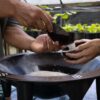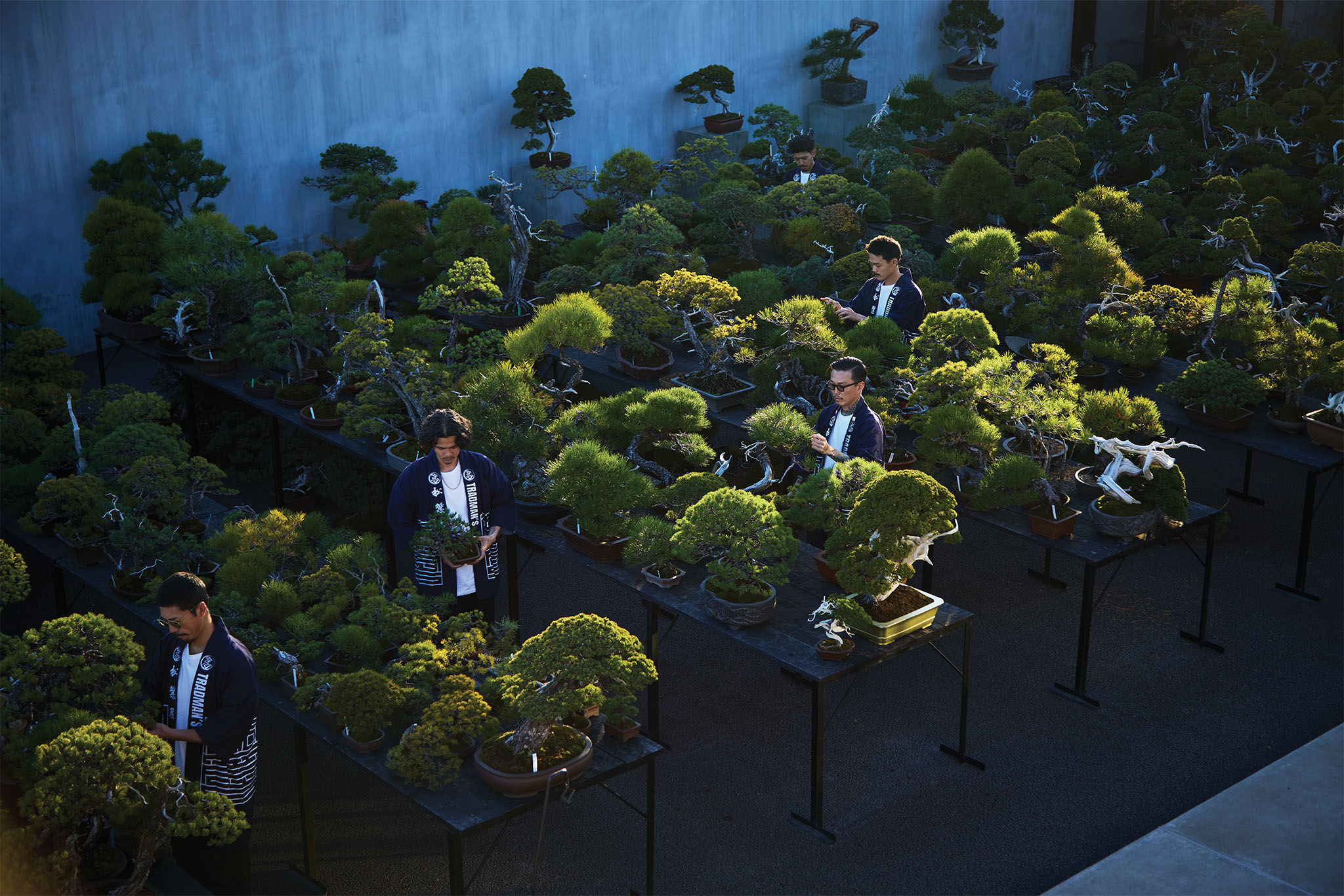Text by Kim Kahan
Images by Ohno Toshio and courtesy of Tradman’s Bonsai
The location of the Tradman’s Bonsai operation is a heavily guarded secret. Located an hour’s drive outside of Tokyo, the compound functions as the company’s headquarters, but it’s as much a haven for the flock of bonsai producers who have found refuge within its hallowed walls. Here, under the guidance of founder and CEO Teppei Kojima, they’ve found a new life’s purpose: perpetuating the centuries-old craft of bonsai in daring ways.
Kojima greets me warmly upon my arrival. The 43-year-old’s personable self-assurance is palpable as he flashes me a broad smile, stylishly attired in his signature black glasses and a well-tailored pair of tapered trousers. Tattoos peek out from under his shirt collar and sleeves in swirls of dark ink.
On any given day, workers dressed in black from head to toe can be found tending to the compound’s orderly forest of bonsai trees, a fraction of the 20 full-time employees that comprise Tradman’s tight-knit crew. Each wears a golden signet ring identical to the one on Kojima’s pinky finger, engraved with the company’s goyomatsu (Japanese white pine) logo. Employees are gifted the ring upon joining the Tradman’s family, a symbol of their commitment and a nod to Kojima and the four childhood friends who comprise his inner circle.
Rows and rows of bonsai stretch the length of the courtyard. Some stand barely taller than a foot. Others stretch upward with undulating branches like dancers caught mid-motion. Those displayed against the compound’s walls are part of a private exhibition that Kojima explains is inspired by ryu (dragons). There are pots decorated with carvings of a crawling dragon or graffitied with brash brush strokes. “Look at this one over here,” Kojima says to me through an interpreter, gesturing to a particularly angular trunk. “This is the dragon’s eyes; this is its snout.” The body of the dragon—the bonsai’s trunk—runs parallel to the soil’s surface, curving fiercely over a rock in a masterful feat of bonsai craftsmanship.
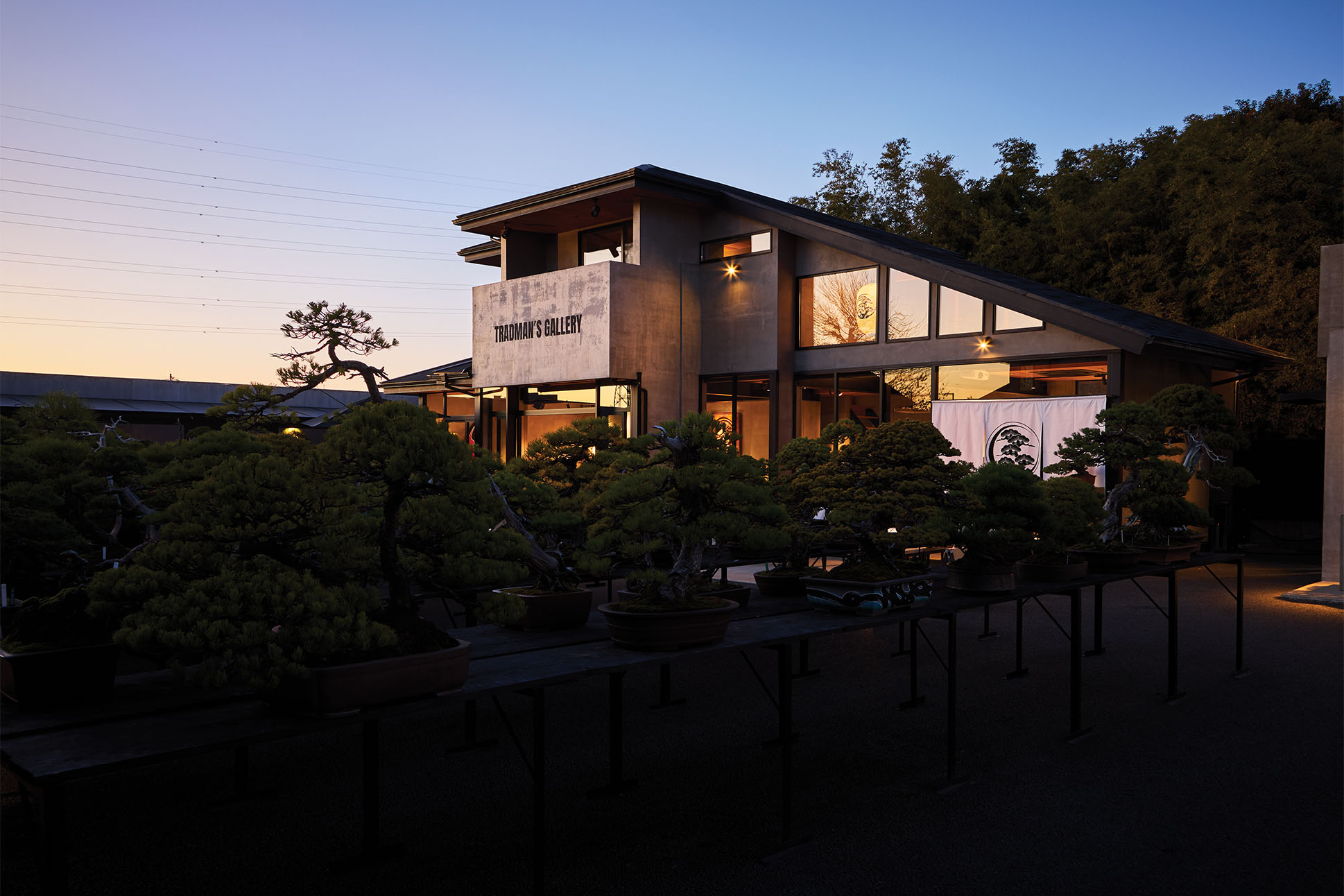
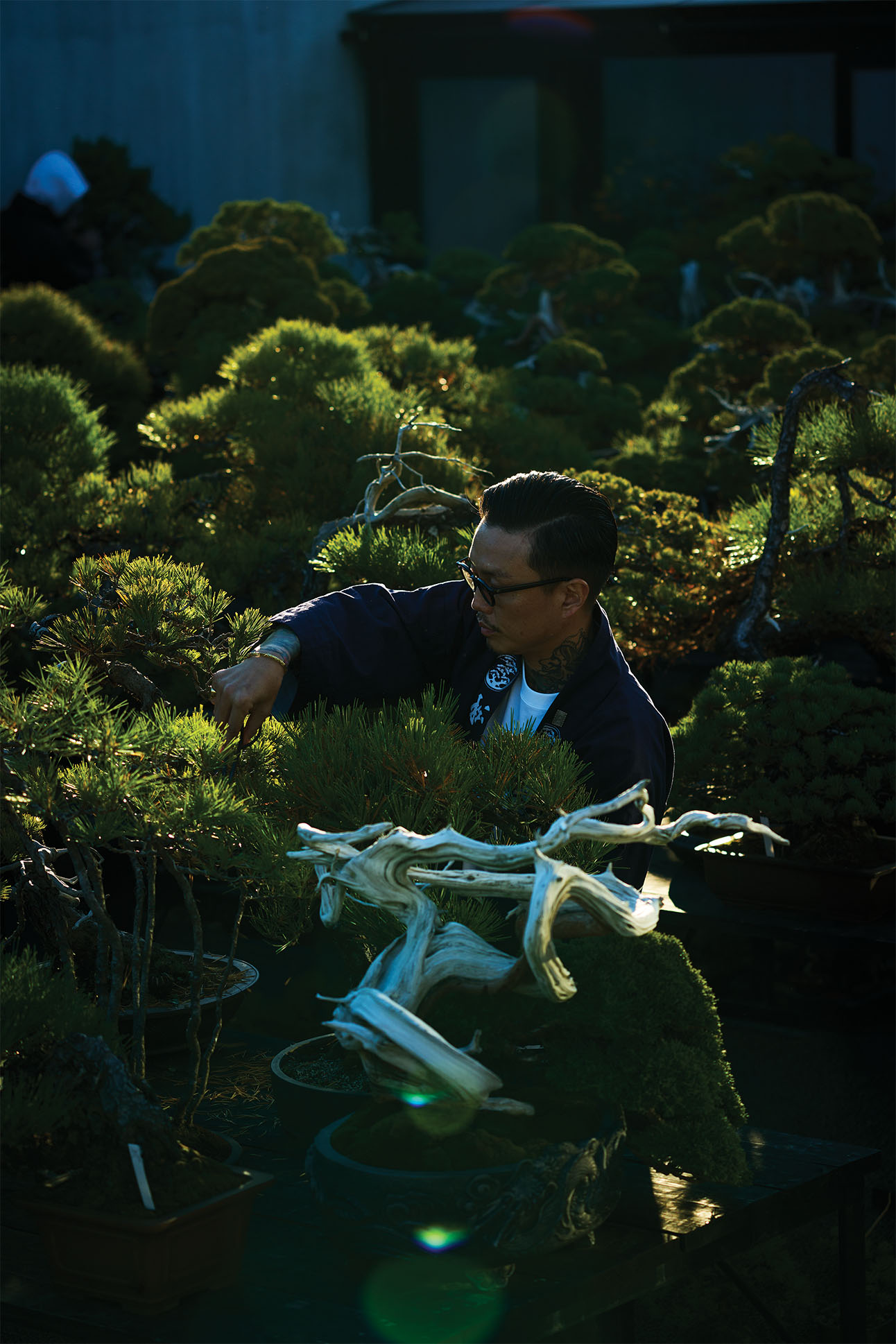
Bonsai is the art of depicting the majesty of nature on a small scale. Using techniques such as pruning, pinching, and grafting, trees and plants that would reach full size in the wild are manipulated to grow no more than a meter high. Branches and trunks are shaped with patience and meticulous care into simulacrums of wizened trees—time’s unceasing passage represented in miniature. The art form has been around for over a thousand years, imported from China and refined by practitioners of Zen Buddhism. Each plant can take years to mature into its desired form, and the most valuable sell for hundreds of thousands of dollars.
With Tradman’s, Kojima has brought a distinct swagger to the craft, incorporating a new playbook to appeal to younger generations. Today, it is one of the most sought-after bonsai brands in Japan, if not the world. Over the years, Tradman’s has lent bespoke bonsai to streetwear brands, such as Bape, Nike, and Kith, and collaborated with Levi’s to produce denim wear inspired by the clothing worn by bonsai growers. It regularly leases bonsai for display by the likes of Aston Martin and Porsche, the bonsai’s elegantly lit branches showcased at upscale events with a grandeur befitting the finest works of art.
Kojima attributes this success to a maverick approach shaped by his unconventional path into the industry. Born to young parents on the outskirts of Chiba Prefecture in Kashiwa, Kojima had a rough upbringing. Money was tight—the family frequently went without electricity or gas—and he and his brother spent several years in a child welfare facility early in life. The administrator of the facility was a keen bonsai grower, inspiring in Kojima a love for the art form that stayed with him even after he and his brother were back under their parents’ roof.

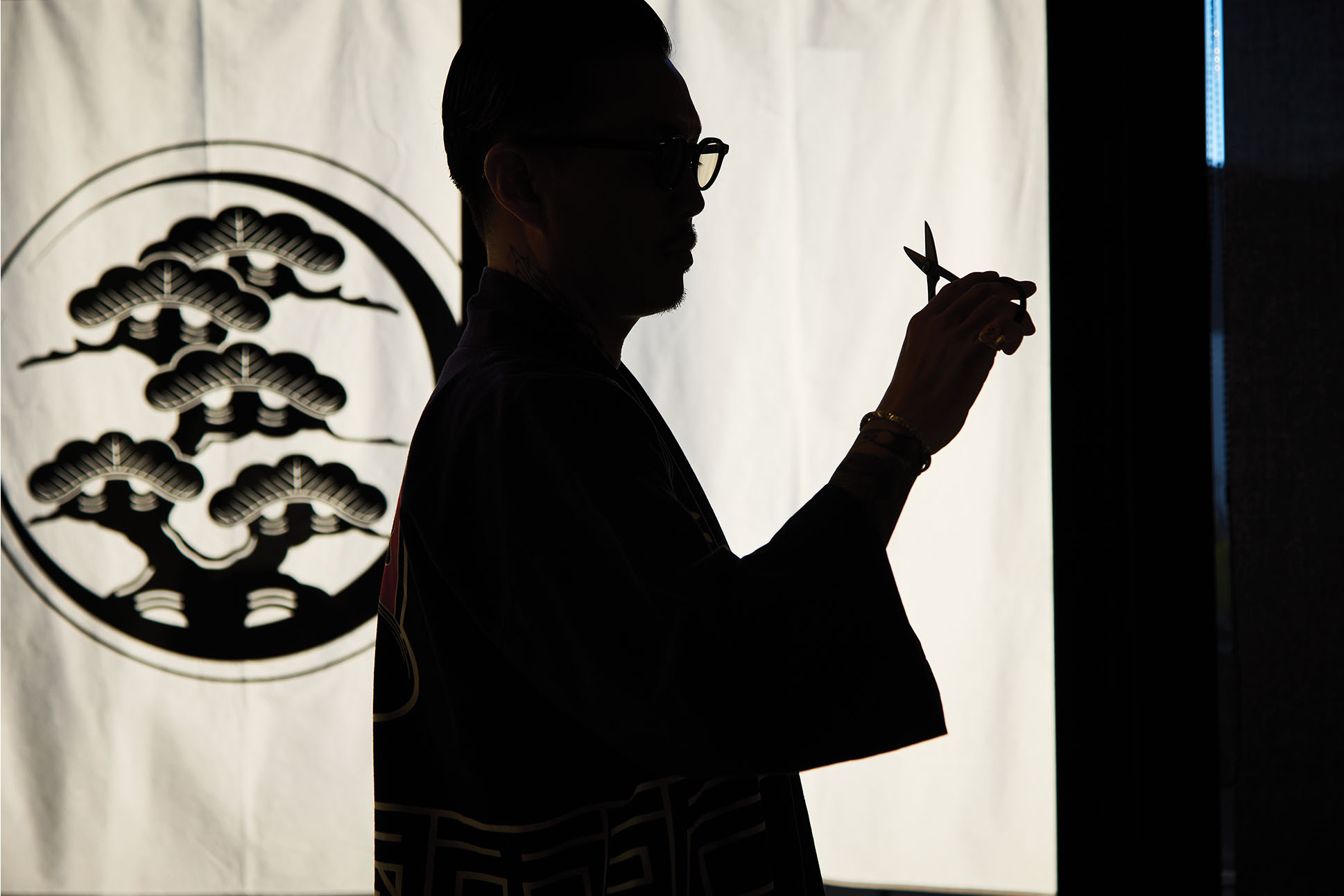
Growing up, Kojima and his friends earned a reputation for stirring up trouble on the streets of Kashiwa. Yet even as a wayward youth, he had a big heart. In middle school, Kojima met his first love and pursued her relentlessly. Her family disapproved of the relationship, condemning Kojima as a troublemaker, and the two were forced to part ways. It would be many years before they were reunited.
Throughout his adolescence, Kojima continued down a path of defiance, skipping school with his friends and provoking run-ins with the police. “You could say we lived the kind of life that people might call delinquent,” he says. “But in a way, we had our own sense of values in that. Those experiences, even the really tough ones, shaped me.”
Hardship followed Kojima into young adulthood. Not long after he lost his mother at age 17, Kojima took a job at a local pachinko parlor to support his family, quickly working his way up the ranks and being promoted to a ranked position within a year. “I realized then that I could do whatever I wanted if I put my mind to it,” he says.
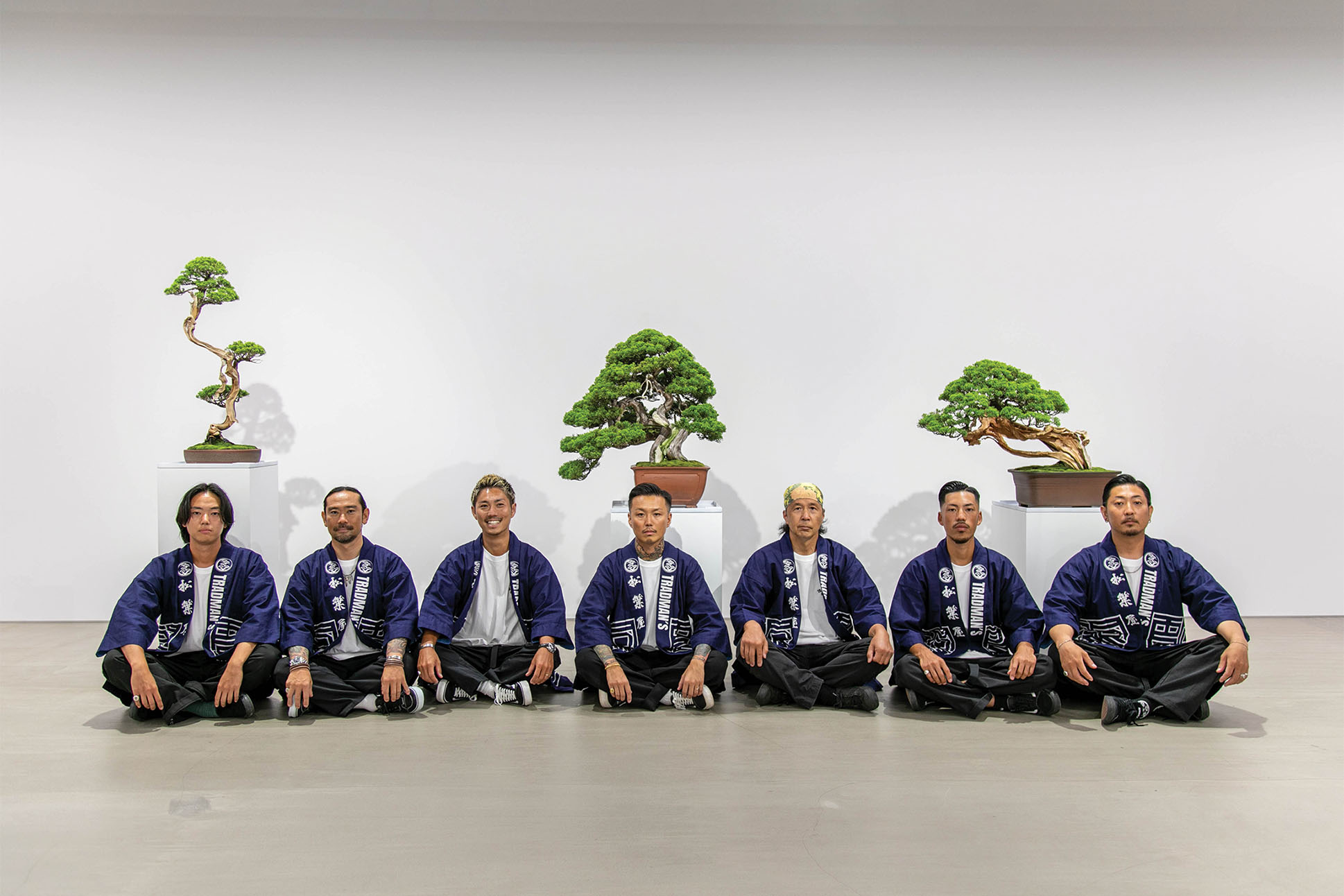
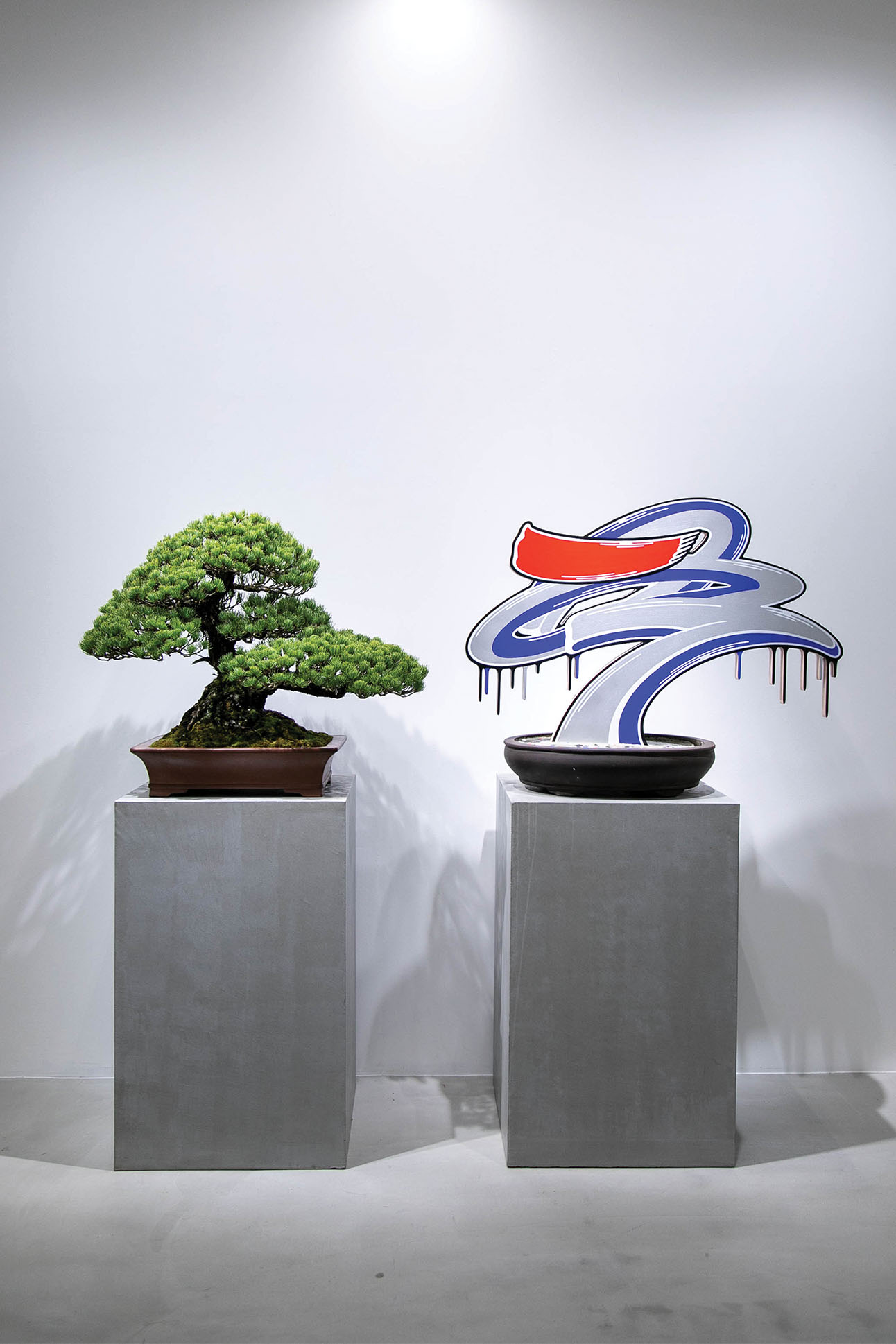
Kojima began saving up to open his own clothing shop, an aspiration ignited by a pair of Levi’s 501s he was gifted when he was a teenager. Roped into paying off his parents’ debt, however, it was a Sisyphean task. After a heated argument with his girlfriend at the time, Kojima stepped out for fresh air and a cigarette. When he came back inside, he discovered she had taken her own life.
Kojima’s close friends acted as his lifeline in the difficult months that followed, never leaving his side as he endured some of his darkest times. “I found out later they thought that if I was left alone, I might [take my life] too,” he says.
One of these friends later earned enough money to start a business selling vintage clothes imported from overseas, and he employed Kojima as a buyer. Kojima felt he’d found his dream career. Then, a buying trip abroad at 31 led to a fateful encounter that changed his trajectory. “One of the people I was working with heard I was Japanese and decided to show me his bonsai,” Kojima recalls. Unpruned and painted garish colors, “they were unlike any bonsai I’d ever seen,” he says. It left an impression on Kojima, who decided that same night to launch a bonsai business. He knew from the start that he wanted his childhood friends to join him in building the company.
Untethered to tradition, Kojima realized he and his crew could market their creations through untraditional means, using Kojima’s pre-existing connections with rappers and fashion designers to repackage bonsai for a trendier market. “I wondered what would happen if I mixed street culture with bonsai, the traditional Japanese art,’” he says. The result was Tradman’s Bonsai, launched in 2015, which marries contemporary Japanese street culture with bonsai’s centuries-old tradition. One of the company’s first events was a street party, music blaring from loudspeakers as Kojima and his team shaped bonsai on the side of the road.
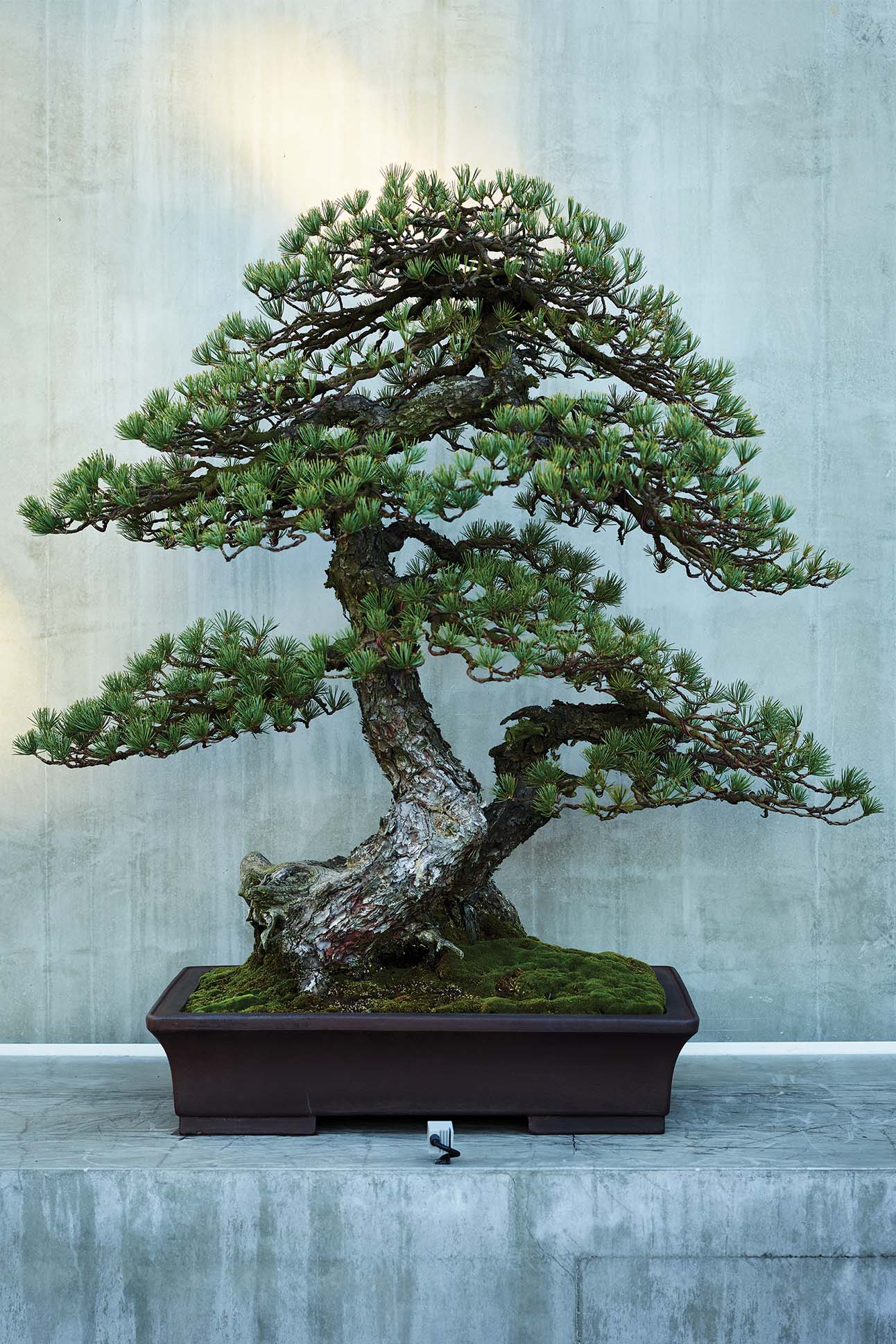
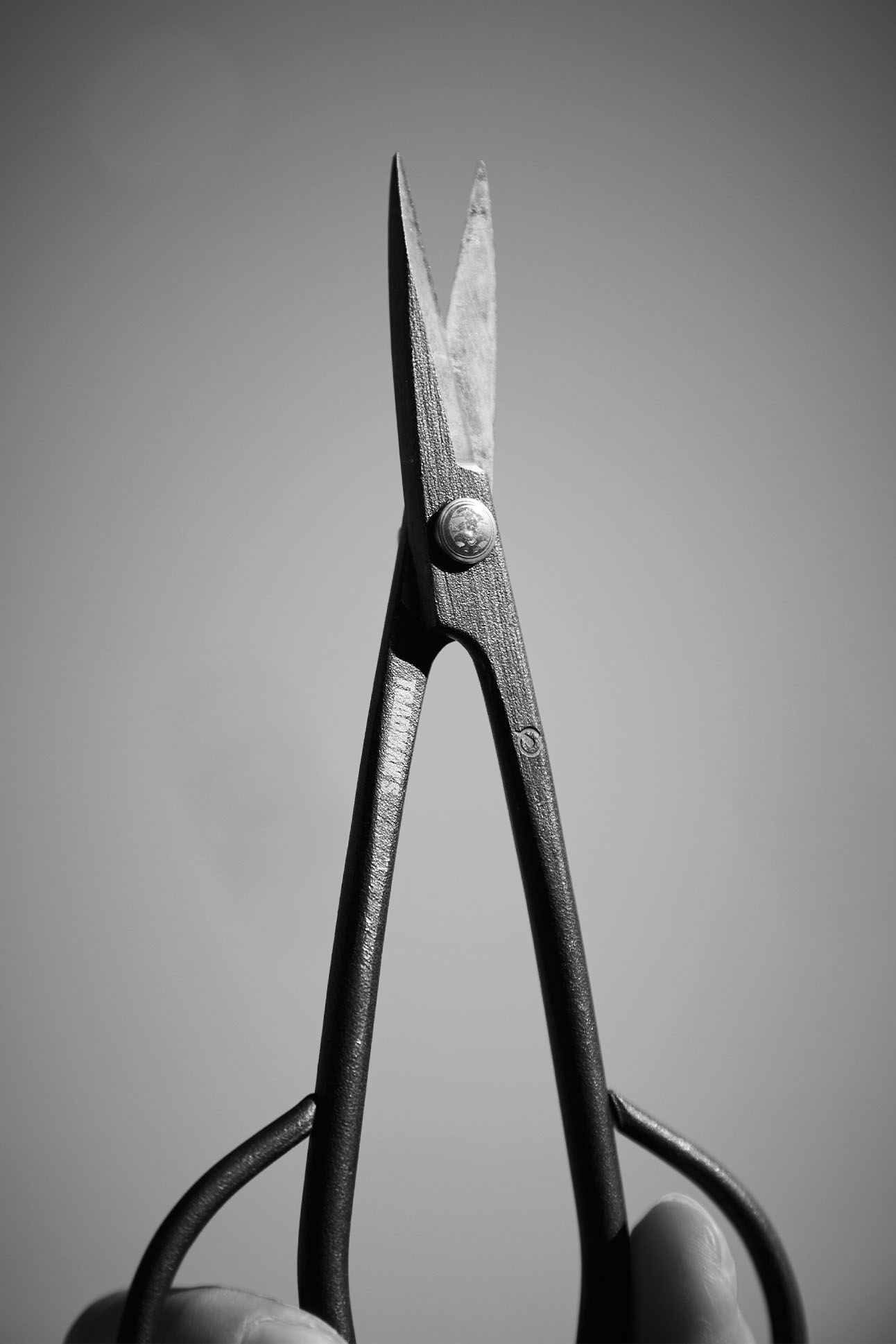
Today, the company shares the art of bonsai through brand collaborations and gatherings at its Marunouchi store. “It’s all about the presentation,” Kojima says, gesturing around the Tradman’s compound, where bonsai are lit with reverence and poised dramatically on custom plinths of gray concrete. “Displaying bonsai in spaces like this has never been done before. Collaborating with high-end brands like Dior or Cartier was previously unheard of in the bonsai world.”
Instead of the filial ties of a traditional bonsai clan, Tradman’s has a system of chosen family. This approach colors every aspect of the company, from everyday gestures to the care with which Kojima selects members of the team. Prospective employees must move close to Tradman’s remote headquarters and train at the complex on their own time. Across eight years, the company boasts a 100 percent retention rate, a testament to the culture that Kojima has cultivated here.
“Tradman’s is unlike anywhere I’ve ever worked,” says Tsubasa Taniguchi, Tradman’s project manager. “If we’re having problems in love, in our personal lives, he’ll get us one-on-one in his office and have a proper chat. He really cares.”
It’s a culture as firmly rooted in moral character and family values as skill. “Life is interesting precisely because of its ups and downs. The hardships, the joys—everything together,” Kojima says. “I want everyone to live with that same mindset. No matter what happens, don’t give up. I’ve lived that way, and I think that’s why I can now spend my days smiling with my family.”
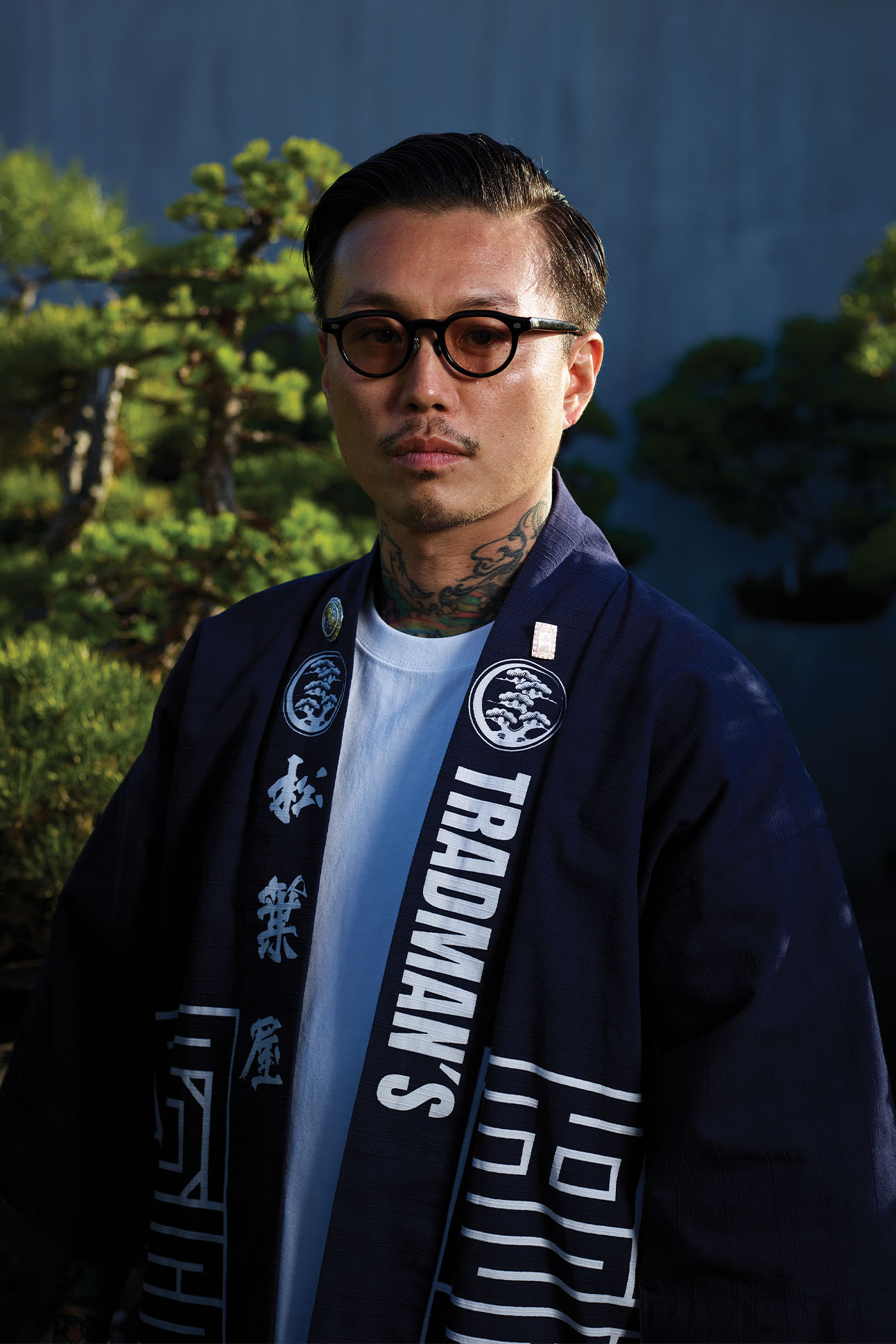
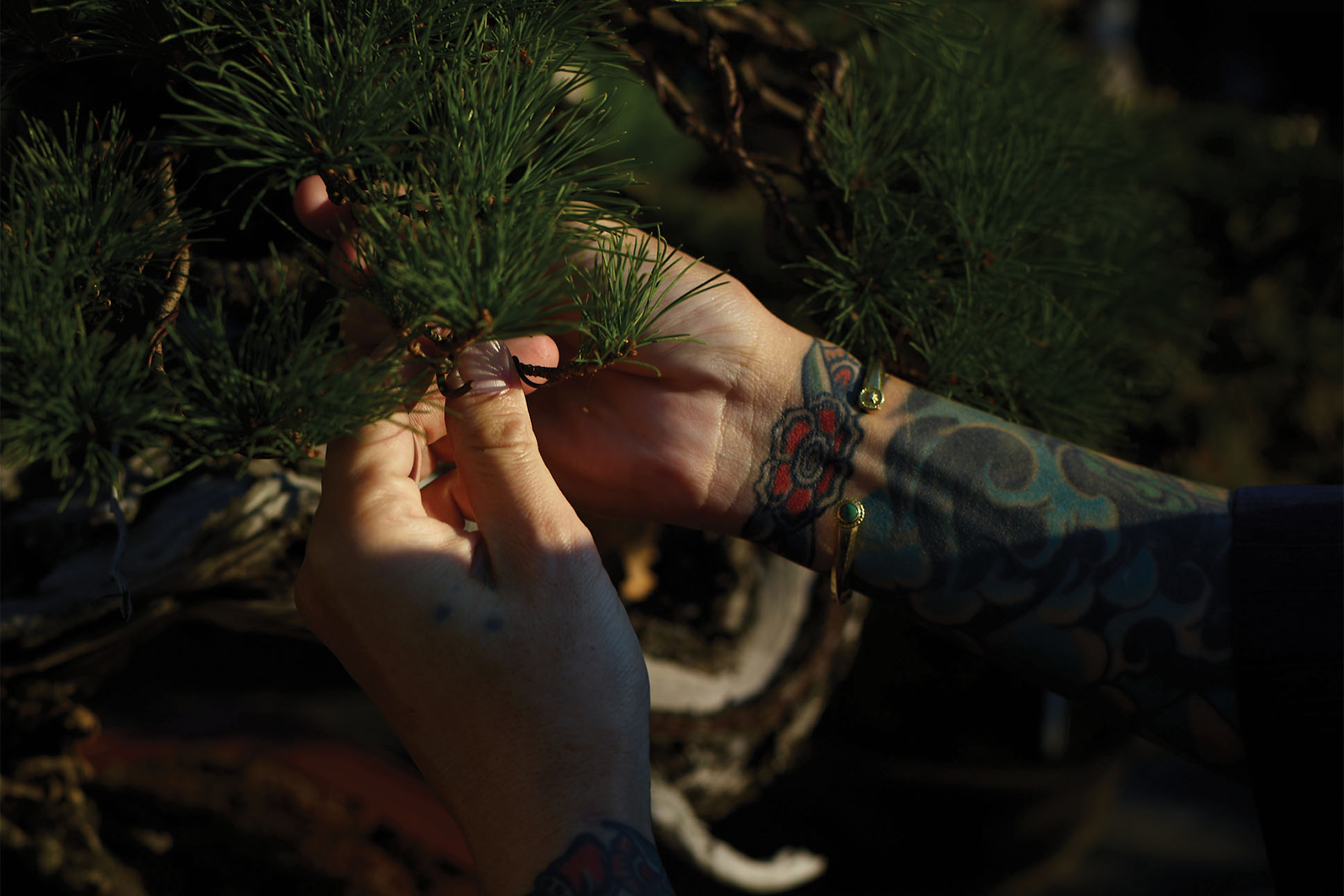
Today, that family not only includes the men of Tradman’s but also Kojima’s first love, Shizuno. Twenty four years after they met in middle school, she and Kojima reconnected, married, and now share three children together. “Everyone here [at Tradman’s], they’re my family,” he says. “I’m the father, and my wife is their mother. We’re there to look after everyone.”
A decade after Tradman’s founding, Kojima’s appreciation for his country has also come into greater focus. For years, he admired other cultures and brands from overseas, not realizing that incredible traditions and customs had been in front of him all along. His aim is for others to have the same realization, too. “I want to break the image of bonsai as an elderly persons’ pursuit,” he says. “That’s why we collaborate with these high-end designers, streetwear brands, and more—we’re showing everyone that bonsai are cool. I want Japanese people to be proud of our own heritage.”
Out of the many bonsai at the Tradman’s facility, there is one Kojima holds most dear: a goyomatsu named “501,” a tribute to both Levi’s 501 denim—a staple of the vintage fashion he loves—and the gang of five he and his close friends formed in middle school. Known for the soft, silvery foliage that it grows in clusters of five needle-like leaves, the bonsai’s branches each hold a nest of feathery needles as full and round as a cumulus cloud on a warm, sunny day. Together they conjure all the strength of a stately pine, and yet there is something airy, even buoyant, about the tree’s lush crown. Within its graceful asymmetry lies a resounding will to live, to persist, and to find beauty in the struggle, against all the odds.

